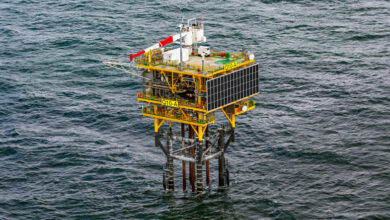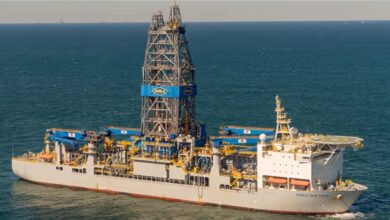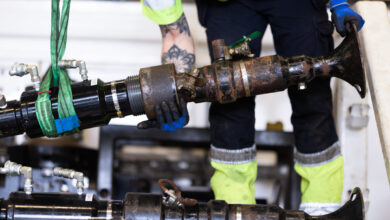H&P President/CEO: Push for automation will be crucial, but people and ESG must also be prioritized
By Stephen Whitfield, Associate Editor
The oil price downturn spawned by the COVID-19 pandemic has been tough on everyone in the industry. However, it has also extended drilling contractors an opportunity to examine the steps they need to take in order to not only survive but thrive in the new market landscape, according to John Lindsay, President and CEO of Helmerich & Payne (H&P). At the virtually held 2020 IADC Drilling Onshore Conference on 19 August, Mr Lindsay spoke about how investing in people, technology and ESG (environmental, social and corporate governance) can help drillers stay resilient in difficult times.
For H&P, digital technology has been a key focus for several years, with significant investments already made to develop software that aim to replace the human decision-making that still powers many processes on the rig. “With the technology of the future, we believe there has to be a bridge to autonomous drilling,” Mr Lindsay said. “We need automation so that we can become less reliant on human decision making. We invest in our people, but we also need to invest in these software solutions.”
The company has already developed several technologies that could help to enable autonomous rig operations, including AutoSlide. It is a suite of drilling services that automates the control of surface equipment and steerable mud motors, optimizing sliding in deviated and horizontal well drilling. The software simultaneously controls the drawworks, top drive and mud pump parameters during sliding, allowing drillers to continuously search for optimized parameters to achieve tool face and rate-of-penetration accuracy goals. The system can be configured for remote monitoring from offsite operating centers, taking directional drillers off the rig and allowing them to monitor multiple rigs at the same time while mitigating safety risks.
H&P has drilled more than 300 wells in the past year using the software. With the COVID-19 pandemic forcing drillers to place even greater emphasis on personnel safety and social distancing on their rigs, a technology like AutoSlide could prove useful.
“In our industry, the adoption of technology has a tendency to be really slow, but the pandemic has highlighted the possibilities of using software solutions like AutoSlide because they see it really reduces exposures at the rig,” Mr Lindsay said. “Additionally, it’s a better quality of life for directional drillers because they’re working in a support role from a remote command center, watching a number of rigs at the same time.”
H&P is also working on an autonomous geosteering system that utilizes advanced logging while drilling (LWD) data filtering to improve wellbore placement. The system tracks geosteering interpretations given the data available and visualizes them on a heat map in a matter of minutes, compared with the hours-long process of manual interpretations. The system is still in beta testing, but upon commercial launch H&P plans to offer it as a combined autonomous drilling package with AutoSlide.
Alongside its investments in automation, Mr Lindsay said it is also imperative to continue investing in people. He mentioned H&P’s Actively C.A.R.E. (Controlling and Removing Exposures) management system as a notable commitment to employee safety. The system utilizes trends in serious injury and fatality (SIF) potential incidents as a leading indicator to remove safety hazards on site.
“We’re big proponents of having a platform where we figure out ways to lessen the number of people on the rig, but we have to figure out how to attract and retain the best people to our industry. We try to do that by investing back in our people,” Mr Lindsay said.
ESG is another important area of investment for H&P, with Mr Lindsay describing it as a “permission to play” element for drillers – the way that safety used to be in the early 1990s. While companies cared deeply about safety, there weren’t sophisticated safety systems in place the way there is now. H&P’s Safety by Design program is one example; it was established in 1998 to identify and eliminate hazards in rig design. Going forward, the industry will need to place the same level of focus on other elements of ESG as it has on personal safety.
Before companies can formulate their own ESG strategies, however, they need to understand stakeholder needs. For shareholders, it can mean providing a continuous source of return on capital. For employees, it can mean providing a healthy, diverse place to work and encouraging personal sustainability. For operator clients, it can mean providing solutions to meet their sustainability goals.
“We’re all focused on providing top-level solutions, but we need to direct some of our efforts into helping our customers with their own sustainability opportunities,” Mr Lindsay said. “We can build teams with our customers to provide those solutions, add value and even lower costs.”




